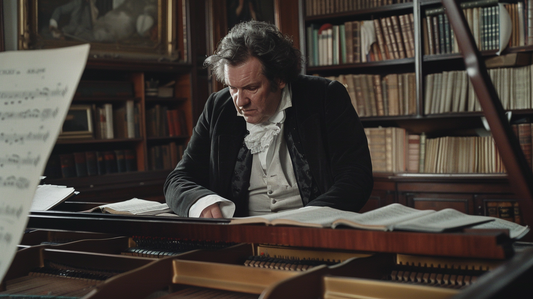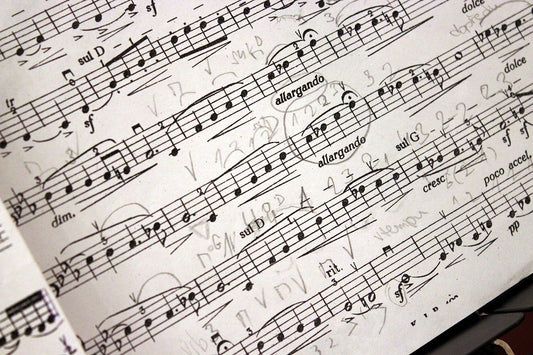 So popular was this product that PS Audio based all our DAC products around the modules (producing the Ultralink DAC) and eventually we even bought the company, Ultra Analog, so popular were these models. That was a long time ago.
That DAC technology depended on having extremely accurate resistors. In fact, so accurate, that Ultra Analog's secret wasn't in using resistor's that were more accurate than anyone else's (they couldn't because we'd reached the theoretical limit on accuracy). Instead, clever engineering and a bag full of tricks did the job. But that job of increasing the number of bits was at its very limit - one pushed to the extreme by this very DAC module, used in so many fine DACS of the day.
Yet today 24 and even 32 bit DACS are everywhere. These everyday DACS have performance so much better than the 20-bit Ultra Link module that the engineers of that period would have cried "impossible"! No one seems to have noticed just how much has changed since the days of Ultra Analog's miracle 20 bit wonder - changes we seem to take for granted. Using the classic ladder DAC architecture, each added bit is exponentially more difficult to achieve than the last.
What changed? Did we solve the problem of the ladder DAC or did something else happen?
So popular was this product that PS Audio based all our DAC products around the modules (producing the Ultralink DAC) and eventually we even bought the company, Ultra Analog, so popular were these models. That was a long time ago.
That DAC technology depended on having extremely accurate resistors. In fact, so accurate, that Ultra Analog's secret wasn't in using resistor's that were more accurate than anyone else's (they couldn't because we'd reached the theoretical limit on accuracy). Instead, clever engineering and a bag full of tricks did the job. But that job of increasing the number of bits was at its very limit - one pushed to the extreme by this very DAC module, used in so many fine DACS of the day.
Yet today 24 and even 32 bit DACS are everywhere. These everyday DACS have performance so much better than the 20-bit Ultra Link module that the engineers of that period would have cried "impossible"! No one seems to have noticed just how much has changed since the days of Ultra Analog's miracle 20 bit wonder - changes we seem to take for granted. Using the classic ladder DAC architecture, each added bit is exponentially more difficult to achieve than the last.
What changed? Did we solve the problem of the ladder DAC or did something else happen?
Climbing the ladder
by Paul McGowan
Back in the dawn of time for digital audio, the 1980's through the 1990's, there was basically only one type of DAC architecture in popular use: the ladder DAC. As well, the mainstay of the ADC (the recording end of things) was also a similar arrangement.
These were the classic PCM based systems we all got involved in digital audio with. They could handle the 44.1kHz/16 bit requirements of the CD with appropriate accuracy and life was good. The sound wasn't so good, but life was.
It didn't take long before the quest for better, faster and more bits started to rear its head. One of the first indications of this came from a company called Ultra Analog out of the Bay Area. Ultra Analog was a very technologically advanced company and they had a better, more accurate version of the classic ladder DAC. Many of you may remember that many, many high end DACS of the day started using their proprietary DAC modules including: Audio Research, Sonic Frontiers, Mark Levinson, Threshold and yes, PS Audio. The main selling point of this DAC is it featured true 20 bit performance. This was no easy task given the architecture of the day. Here's a photo of an Ultra Analog module.
 So popular was this product that PS Audio based all our DAC products around the modules (producing the Ultralink DAC) and eventually we even bought the company, Ultra Analog, so popular were these models. That was a long time ago.
That DAC technology depended on having extremely accurate resistors. In fact, so accurate, that Ultra Analog's secret wasn't in using resistor's that were more accurate than anyone else's (they couldn't because we'd reached the theoretical limit on accuracy). Instead, clever engineering and a bag full of tricks did the job. But that job of increasing the number of bits was at its very limit - one pushed to the extreme by this very DAC module, used in so many fine DACS of the day.
Yet today 24 and even 32 bit DACS are everywhere. These everyday DACS have performance so much better than the 20-bit Ultra Link module that the engineers of that period would have cried "impossible"! No one seems to have noticed just how much has changed since the days of Ultra Analog's miracle 20 bit wonder - changes we seem to take for granted. Using the classic ladder DAC architecture, each added bit is exponentially more difficult to achieve than the last.
What changed? Did we solve the problem of the ladder DAC or did something else happen?
So popular was this product that PS Audio based all our DAC products around the modules (producing the Ultralink DAC) and eventually we even bought the company, Ultra Analog, so popular were these models. That was a long time ago.
That DAC technology depended on having extremely accurate resistors. In fact, so accurate, that Ultra Analog's secret wasn't in using resistor's that were more accurate than anyone else's (they couldn't because we'd reached the theoretical limit on accuracy). Instead, clever engineering and a bag full of tricks did the job. But that job of increasing the number of bits was at its very limit - one pushed to the extreme by this very DAC module, used in so many fine DACS of the day.
Yet today 24 and even 32 bit DACS are everywhere. These everyday DACS have performance so much better than the 20-bit Ultra Link module that the engineers of that period would have cried "impossible"! No one seems to have noticed just how much has changed since the days of Ultra Analog's miracle 20 bit wonder - changes we seem to take for granted. Using the classic ladder DAC architecture, each added bit is exponentially more difficult to achieve than the last.
What changed? Did we solve the problem of the ladder DAC or did something else happen?
 So popular was this product that PS Audio based all our DAC products around the modules (producing the Ultralink DAC) and eventually we even bought the company, Ultra Analog, so popular were these models. That was a long time ago.
That DAC technology depended on having extremely accurate resistors. In fact, so accurate, that Ultra Analog's secret wasn't in using resistor's that were more accurate than anyone else's (they couldn't because we'd reached the theoretical limit on accuracy). Instead, clever engineering and a bag full of tricks did the job. But that job of increasing the number of bits was at its very limit - one pushed to the extreme by this very DAC module, used in so many fine DACS of the day.
Yet today 24 and even 32 bit DACS are everywhere. These everyday DACS have performance so much better than the 20-bit Ultra Link module that the engineers of that period would have cried "impossible"! No one seems to have noticed just how much has changed since the days of Ultra Analog's miracle 20 bit wonder - changes we seem to take for granted. Using the classic ladder DAC architecture, each added bit is exponentially more difficult to achieve than the last.
What changed? Did we solve the problem of the ladder DAC or did something else happen?
So popular was this product that PS Audio based all our DAC products around the modules (producing the Ultralink DAC) and eventually we even bought the company, Ultra Analog, so popular were these models. That was a long time ago.
That DAC technology depended on having extremely accurate resistors. In fact, so accurate, that Ultra Analog's secret wasn't in using resistor's that were more accurate than anyone else's (they couldn't because we'd reached the theoretical limit on accuracy). Instead, clever engineering and a bag full of tricks did the job. But that job of increasing the number of bits was at its very limit - one pushed to the extreme by this very DAC module, used in so many fine DACS of the day.
Yet today 24 and even 32 bit DACS are everywhere. These everyday DACS have performance so much better than the 20-bit Ultra Link module that the engineers of that period would have cried "impossible"! No one seems to have noticed just how much has changed since the days of Ultra Analog's miracle 20 bit wonder - changes we seem to take for granted. Using the classic ladder DAC architecture, each added bit is exponentially more difficult to achieve than the last.
What changed? Did we solve the problem of the ladder DAC or did something else happen?
- Choosing a selection results in a full page refresh.
- Opens in a new window.








